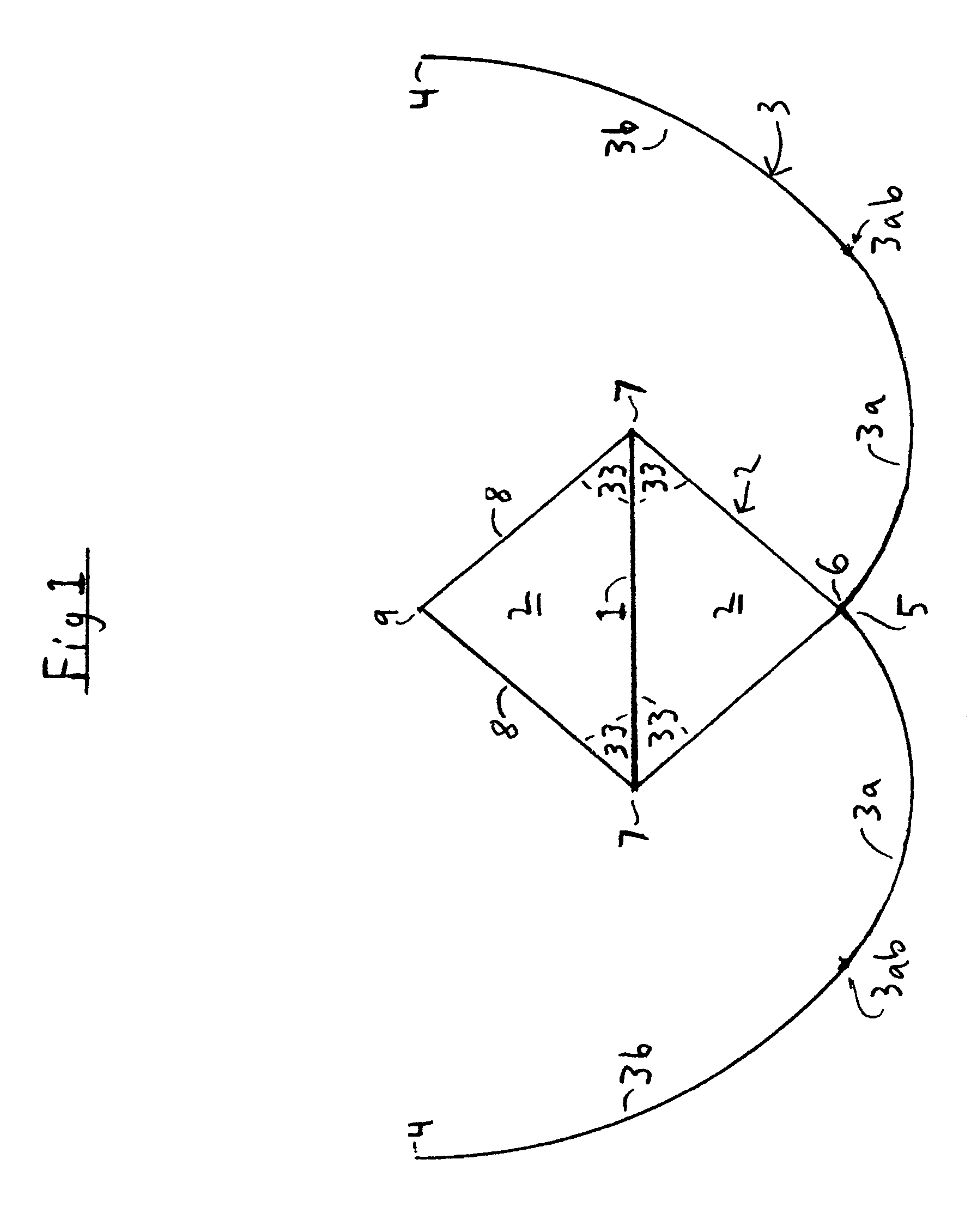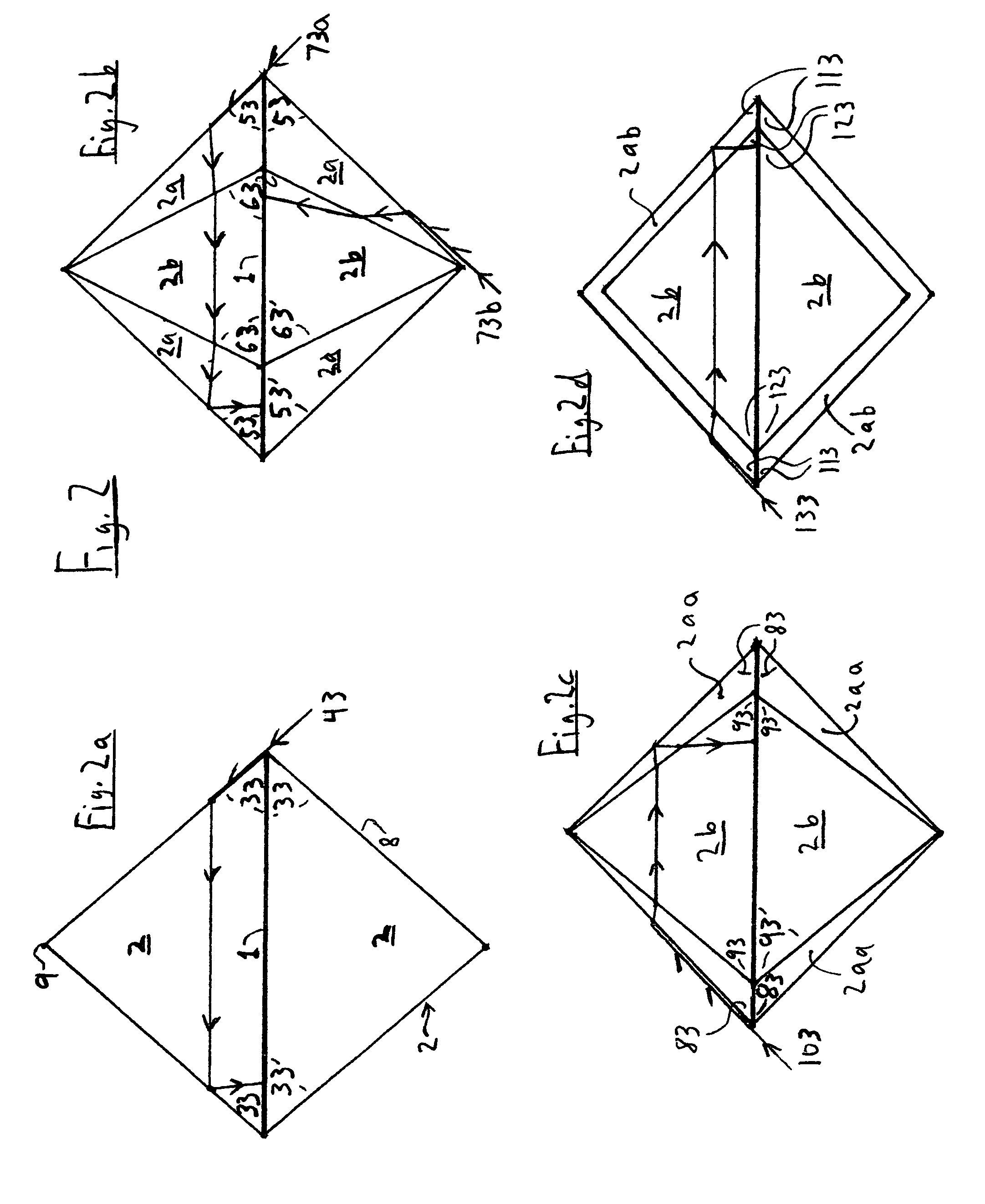Non-imaging diffuse light concentrator
a concentrator and diffuse light technology, applied in the field of solar energy, can solve the problems of reducing the direct sunlight collected, haze or smog, and the cost of flat-panel solar electric collectors, and achieve the effects of increasing concentratio, reducing the size of the receiver, and high concentration ratio
- Summary
- Abstract
- Description
- Claims
- Application Information
AI Technical Summary
Benefits of technology
Problems solved by technology
Method used
Image
Examples
embodiment 28
[0033]FIG. 9 is a perspective view of FIG. 8 extended longitudinally in the third dimension. It is shown as a section of trough like collector, with the asymmetrical refractor embodiment 28 of FIG. 7b, and its secondary composite refractor 2c, and 2d. The refractor 28 is adjacent to the asymmetrical reflector 38. The reflector 38 and refractor 28 are terminated with a planar reflector end cap 42 with a free edge 18. The refractor's fluid port 62 exits through the end cap 42. In FIG. 9, the planar reflector end cap 42 is in a transverse cross-section parallel to a transverse cross-section of FIG. 8.
embodiment 30
[0034]FIG. 10 is a transverse cross-sectional view of an embodiment of the invention with an asymmetrical reflector 39. FIG. 10 uses a refractor embodiment 30 that is a version of the refractor from FIG. 7c. The aperture A to receiver 1 proportion is a CR of about four. The transverse AOA 13 is about 130°. To improve thermal efficiency a transparent, thin walled, half-round tube 31 surrounds the refractor's transparent outer section 2ae. The gap32 in between the circular arc section 31 and the transparent solid outer refractor section 2ae, can be filled with a low conductance gas or be substantially evacuated. A an insulating material 35 can enclose the secondary reflector 342. The refractor 30 is proportionally about 40% solid refractor areas 2ae and 2c. The inside top 2e of the solid refractor 2ae is curved to better support a substantially evacuated gap 32.
[0035]FIG. 11 is an embodiment of the invention as a higher CR 3-D diffuse light concentrator. FIG. 11 is a perspective view ...
PUM
 Login to View More
Login to View More Abstract
Description
Claims
Application Information
 Login to View More
Login to View More - R&D
- Intellectual Property
- Life Sciences
- Materials
- Tech Scout
- Unparalleled Data Quality
- Higher Quality Content
- 60% Fewer Hallucinations
Browse by: Latest US Patents, China's latest patents, Technical Efficacy Thesaurus, Application Domain, Technology Topic, Popular Technical Reports.
© 2025 PatSnap. All rights reserved.Legal|Privacy policy|Modern Slavery Act Transparency Statement|Sitemap|About US| Contact US: help@patsnap.com



